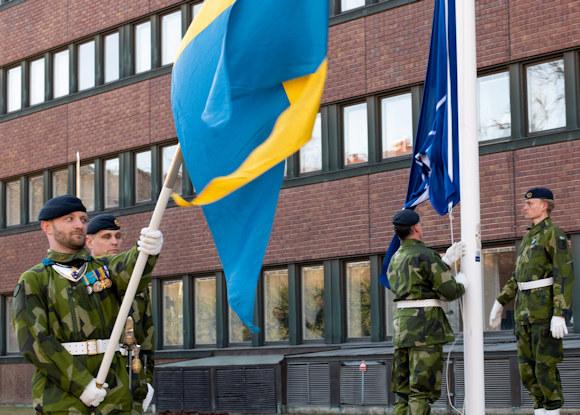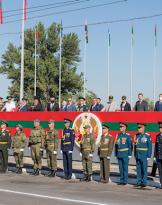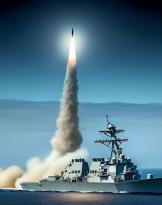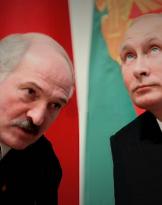On Thursday 7 March, Sweden abandoned its proverbial neutrality, becoming the 32nd member of NATO. The formal membership ceremony was held on Monday 11th in Brussels, during which the Swedish national flag was hoisted alongside the other 31 of the NATO member countries.
This is another great "success" of Moscow's foreign policy, whose arrogance and aggressiveness meant that Stockholm (and before it Helsinki, on 4 April 2023) abandoned the policy of neutrality that had always characterized the advanced country Northern European.
We can already hear the complaints of the Kremlin's propaganda, and of the many (too many) sympathizers who accuse NATO of expanding to the east because they are hostile to Moscow, forgetting (sic!) that the growth in the number of NATO members continues to occur mainly due to of revulsion towards the regime in Moscow, which is so little liberal that it wants to gain strategic space by attacking independent countries and, internally, by imprisoning or killing political opponents.
In any case, it is undeniable that, since the 90s, behind the requests for membership of NATO by the countries of the former Warsaw Pact there has been the fear that Moscow could once again constitute a threat to their independence, achieved after years of painful domination. A threat that is anything but far-fetched, given that Moscow continued to consider the territories of the former Soviet Union as part of its sphere of influence, to be subdued by hook or by crook, as demonstrated by the war in Ukraine.
To those countries, which have embraced the Western way of life, voluntarily and enthusiastically escaping Russian influence, in the last year two historically neutral countries have also joined together, which feared that Putin could expand the "special operations", bringing military clashes onto their territory. This is the real reason that has determined one today a scenario that was unimaginable until three years ago. It is not the NATO border that has moved closer to Moscow, it is Moscow's attitude that has pushed those countries and governments to turn their backs on it.
But what are the implications of this new membership?
Geopolitical and naval effects
First of all, it is immediately obvious that Sweden's accession allowed the welding of the Western bloc, whose eastern flank now features an uninterrupted land boundary line of 1.340 km, running from the waters of the cold northern seas to the warm Mediterranean waters of the southern front.
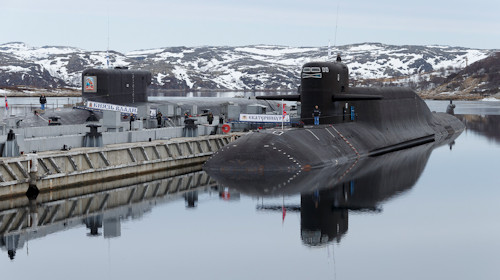 Furthermore, the new land border line of NATO (Finland) is located a very short distance from the port of Murmansk (photo), notoriously home to Russian strategic nuclear submarines. A peculiarity that cannot fail to interest Russian military and political leaders, due to the understandable strategic implications. A peculiarity that perhaps should have suggested to the Russians to avoid openly threatening Finland and Sweden pushing them, in fact, to leave their historic neutrality. As a result of his choices, Moscow has therefore increased the naval weight of the Alliance in the Baltic, drastically reducing its room for maneuver in those waters.
Furthermore, the new land border line of NATO (Finland) is located a very short distance from the port of Murmansk (photo), notoriously home to Russian strategic nuclear submarines. A peculiarity that cannot fail to interest Russian military and political leaders, due to the understandable strategic implications. A peculiarity that perhaps should have suggested to the Russians to avoid openly threatening Finland and Sweden pushing them, in fact, to leave their historic neutrality. As a result of his choices, Moscow has therefore increased the naval weight of the Alliance in the Baltic, drastically reducing its room for maneuver in those waters.
The accession of Finland in 2023 and of Sweden last week, in addition to representing an undoubted strengthening of NATO's forces (around 980.000 active and reserve soldiers in total) is also a very important game changer on the political chessboard, as it represents a signal of enormous international importance.
In fact, a new geostrategic context has been established with Finland and Sweden. Unlike three years ago, in fact, as a result of the Russian approach, the Baltic Sea is now bordered almost entirely by NATO countries with Stockholm bringing, in addition to the experience and capacity of its centuries-old Navy (founded in 1522), also four ports: Gothenburg, Stockholm, Gävle and Luleå.
Not only that, unlike the previous accessions of the ex-USSR countries, the Swedish Navy will not need long times to make its procedures completely compatible with those of NATO, given that it has already collaborated extensively with the Western Navies, for example, during the 'operation Atalanta and in UNIFIL Maritime Task Force. Participation in periodic exercises, such as BALTOPS and NoCo (Northern Coasts), in which the Navy also participates, will predictably be sufficient for complete integration with the NATO system and procedures.
The new situation that has emerged in the Baltic Sea also has a particular strategic significance, also entailing the possibility of influencing any maritime traffic in the event of an open clash with Russia, influencing land events. The naval war in the Adriatic in the period 1915-1918 teaches. In this context, the Swedish island of Gotland represents an important point for possible application of strategies Anti Access / Denial Area (A2/AD). The creation of an exclusion zone centered on the island could, in fact, allow the control of the central-northern area of the Baltic, including the airspace above it and to promptly deal with any aggression coming from Russian territory.
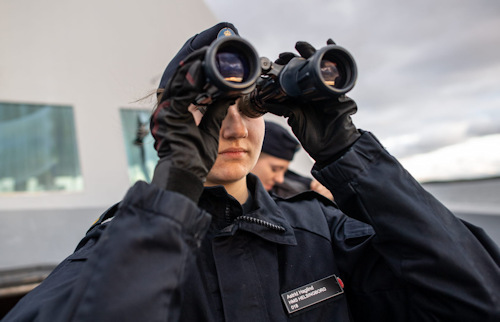
From an exquisitely technical-military point of view, the missile capabilities of the Swedish surface units, which are added to those already supplied to NATO, and of the batteries positioned on the ground, would, in case of need, allow for an effective anti-aircraft defense and a significant response and response capability. of force projection, in the face of the threat represented mainly by the missiles present in Kaliningrad.
In such confined waters, anti-submarine deterrence has a high probability of achieving its purpose, not allowing underwater vehicles to have large spaces for maneuver.
All this also has economic relevance, given that for Sweden, Finland, the Baltic States and Poland the Baltic Sea represents a vital route for maritime transport, as it is also economically important for Russia, as the ports of St. Petersburg and Kaliningrad are its main northern trading ports.
Implications for the Mediterranean and the European Union
To distract attention from the ports of Kaliningrad and St. Petersburg, now strictly observed, Russian commitment could now further focus on the Mediterranean, NATO's southern front, which Voenno Morskoy Flot (VMF) has been trying to “Russianize” for some time now, occupying all available spaces (read article “The new Russian maritime strategy").
The example is the port of Tartus (in Syria), passing through the Libyan ports and the connected air-naval bases, or through collaborations with some countries on the southern shore or Sudan, necessary to also have projection on the Red Sea and Suez. An occupation of spaces that would allow Moscow, if not adequately counterbalanced, to be able to play a significant role in the issues of the central Mediterranean (strategic due to its proximity to Italy and its most direct interests) and eastern Mediterranean (fundamental for the enormous energy resources that are still hidden under the seabed).
In this context, the gradual disengagement initiated by Washington for a "pivot to Pacific” which began with the Obama era, as a result of Putin's "special operations" has now become a remodulation (and not a decrease) of the American presence in the Mediterranean where, alongside the US forces, the allied navies (especially Italy and France) are today called upon to face with greater energy and determination the exuberance of Russia and all those countries that intend to oppose freedom of navigation and the free exploitation of the basin's resources.
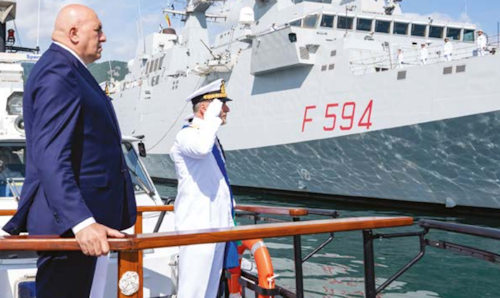 However, in the face of a significant growth in commitments and responsibilities both in the Mediterranean and "outside the area" (see most recently the command of the mission Aspides), the Navy's personnel strength continues to see a gap with other Armed Forces, which is the largest among all Western countries. At the moment, in fact, around 90.000 personnel are expected for the Army, around 40.000 for the Air Force and less than 29.000 for the Navy. Similar deficiencies are found in the sector of civilian personnel, necessary for all activities within the logistics (arsenals, technical maintenance, etc.) and administrative fields. A truly felt problem within the Armed Forcesi, which remained the only one in Europe to have such low numbers in percentage compared to other Armed Forces.
However, in the face of a significant growth in commitments and responsibilities both in the Mediterranean and "outside the area" (see most recently the command of the mission Aspides), the Navy's personnel strength continues to see a gap with other Armed Forces, which is the largest among all Western countries. At the moment, in fact, around 90.000 personnel are expected for the Army, around 40.000 for the Air Force and less than 29.000 for the Navy. Similar deficiencies are found in the sector of civilian personnel, necessary for all activities within the logistics (arsenals, technical maintenance, etc.) and administrative fields. A truly felt problem within the Armed Forcesi, which remained the only one in Europe to have such low numbers in percentage compared to other Armed Forces.
From a political-military point of view, spurred by the Russian threat the European Union preparations are being made so that by 2035 at least 65% of European armaments will be produced by Union industries. The legislative proposal for the European Defense Industrial Program (EDIP - European Defense Industry Programme) was therefore presented by the European Commission on 5 March. In essence, the EU is dedicating itself to an adequate strengthening of the European pillar of the Atlantic Alliance, without pursuing objectives considered for the moment too ambitious and out of reach. In essence, the strengthening of industrial cooperation is the strong point of the overall project which should lead, once fully operational, to a significant strengthening of the EU's autonomous capacity for crisis management interventions in the closest areas. Not only that, even on its own the EU should in the future be able to deal with a medium and conventional threat addressed directly to you. This will also allow us to avoid the "problem" of the "Anglo-Saxonization" of the NATO system, raising awareness that Europe exists.
Conclusions
The Russian attitude has allowed NATO to regain a sense of its own usefulness, after a period of disorientation which had led some European politicians to declare that the Alliance seemed brain dead. Putin has, therefore, achieved this great geopolitical result, strengthening an Alliance that seemed to show signs of tiredness, after the fall of the Wall and the dissolution of the Soviet Union.
Russia's aggression against Ukraine not only fully revitalized the Atlantic Pact Organization, making it acquire new important members, but also gave a strong boost to the identity of the European Union.
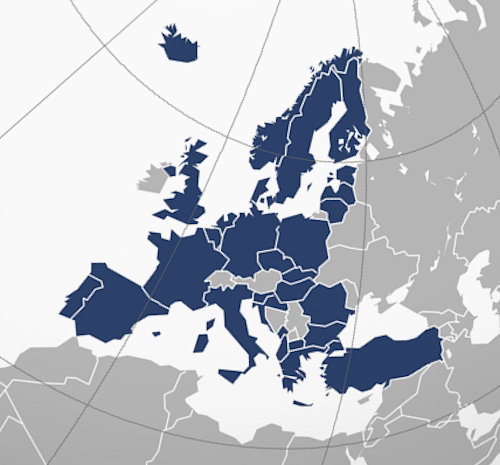
With the Baltic "controlled" by NATO, the Mediterranean area, understood in the broadest sense, with all its derivations, is also even more crucial for the balance of the Euro-Atlantic region and therefore increases its importance for not only national geopolitical and strategic interests but also of the Alliance and, more broadly, for global ones. This is due both to the presence of unstable areas such as the Middle East, and to the presence of a significant Russian air-naval device, and because goods circulate in the Mediterranean, enormous energy resources are found and important submarine lines of computer communication run, which regulate the economy. world.
However, in order to allow the Navy to fully carry out the tasks that the country, the EU, NATO and the UN entrust to it, while maintaining the politically determined level of national ambition, more personnel (overall at least 35.000 effectives, i.e. 6.000 more than those currently expected), together with theessential financing of all naval programs currently planned.
There is no need to be afraid of taking initiatives and political decision makers have the duty to look far ahead, beyond the horizon dictated by the simple management of power, too often limited to the next elections.
It is essential to grasp the current moment of acceleration of initiatives aimed at achieving autonomy in the Defense sector. Acceleration caused by the unscrupulousness and violence demonstrated by Moscow and autonomy essential in order to counteract effectively the threats looming in the Mediterranean and on the world's seas with the aim of politically and economically affecting our country and our allies.
i A problem that in the 80s was addressed with the so-called "Lagorio Law", which planned a ceiling for the Navy of 40.000 personnel.
Photo: Försvarsmakten / MoD Russian Fed. / Navy /web

